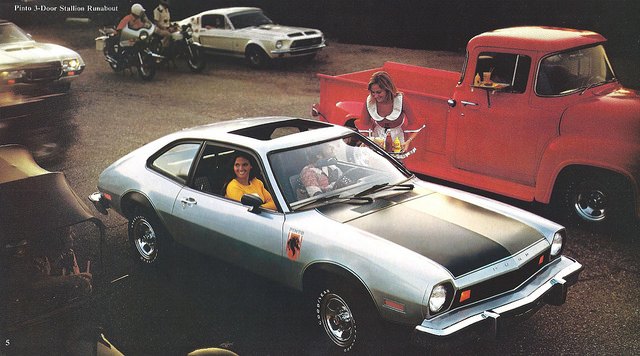From the Pinto to Tesla, Safety Crusader Clarence Ditlow Spent a Lifetime Fighting Dangerous Cars

Passionate automotive safety advocate and longtime Center for Auto Safety executive director Clarence Ditlow has died at age 72.
From his early work with Ralph Nader to his 40 years at CAS, Ditlow was by all accounts a shy, hard-working man who turned into an attack dog when he felt an automaker’s neglect put drivers’ safety at risk.
Since the early 1970s, Ditlow played a role in exposing glaring automotive safety concerns, sparking massive recalls in the process. During this time, Ditlow proved instrumental in seeing lemon laws passed in all 50 states, as well as upgraded road safety standards.
Still, it’s the recalls — and the damaging limelight cast on the offending automakers — that stands out the most. After taking the helm of CAS in 1976, Ditlow immediately put the heat on Ford for its fire-prone Pintos. The popular compact featured a gas tank that could rupture during rear-end collisions, and in 1978 the automaker was forced to recall 1.5 million models, sullying the brand.
Ditlow was just getting started. Over the course of the next four decades, Ditlow and his Center helped expose the dangers of GM’s side-saddle pickup truck gas tanks, Firestone tire-equipped Ford Explorers, faulty GM ignition switches, and in his final year, the potential for danger with Tesla’s Autopilot semi-autonomous driving system. The National Highway Traffic Safety Administration was a frequent target, as he felt the agency went too easy on automakers.
“Since the center was founded in 1970, the death rate on America’s roads has dropped dramatically, from 5.2 per 100 million vehicle miles traveled in 1969 to 1.1 per 100 million vehicle miles in 2010,” the Center for Auto Safety said in a statement on Ditlow’s passing.
The Center continued:
Under Mr. Ditlow, the Center played a major role in these recalls, among others: 6.7 million Chevrolets for defective engine mounts, 15 million Firestone 500 tires, 1.5 million Ford Pintos for exploding gas tanks, and 3 million Evenflo child seats for defective latches.
In the past seven years alone, the Center was the primary force behind the recalls of 7 million Toyotas for sudden acceleration, 2 million Jeeps for fuel tank fires, 11 million GM vehicles for defective ignition switches, and more than 60 million faulty Takata airbag inflators.
At one of the Center’s first staff meetings, Mr. Nader made the installation of air bags a key early goal. It took approximately 20 years to accomplish it, but they are now standard in all vehicles.
While Ditlow was no less passionate about safety than his contemporary Ralph Nader, he was seen as less combative, which may have helped his ability to prod federal regulators into action.
“His surgeon loved him so much that she sat for two hours last week by his beside and sang to him,” Nader told the Los Angeles Times. “I don’t know anybody who disliked him. Of course, they disliked me.”
Ditlow died Thursday after a year-long battle with colon cancer.
[Images: Luis Alvarez/Associated Press; Ford]

More by Steph Willems
Latest Car Reviews
Read moreLatest Product Reviews
Read moreRecent Comments
- Redapple2 I ve slept on it. I would take one on a 3 yr lease for $199/mo- ($1000 down total). Evil gm Vampire gave me this deal in 2012.
- 3SpeedAutomatic Would prefer a non-turbo with a stick shift. That would be more fun to drive!!🚗🚗🚗Also, I could teach my nieces and nephews to drive a standard. You'd be surprised how many folks can't handle a stick shift today. Yet, in Europe, most rental cars come with a stick unless you specify otherwise.
- Jeffrey Henry Ford said about innovation, “ If I had asked my customers what they wanted, then they would have said a faster horse." Change is inevitable!!!https://www.wri.org/insights/countries-adopting-electric-vehicles-fastest#:~:text=Currently%2C%2016%20countries%2C%20including%20Canada,create%20and%20enforce%20such%20policies.
- ToolGuy If these guys opened a hotel outside Cincinnati I would go there to sleep, and to dream.
- ToolGuy Michelin's price increases mean that my relationship with them as a customer is not sustainable. 🙁



































Comments
Join the conversation
Who was more responsible for the dramatic decline in traffic fatalities, Nader, Ditlow and Claybrook, or Bela Barenyi (crush zones and safety cells), Nils Bohlin (3 point harness) and the Eaton Corp (airbags)?
Oh, yoo-hoo... Admins, Meesa thinkin' I can drop the Kenmore part now, yes?